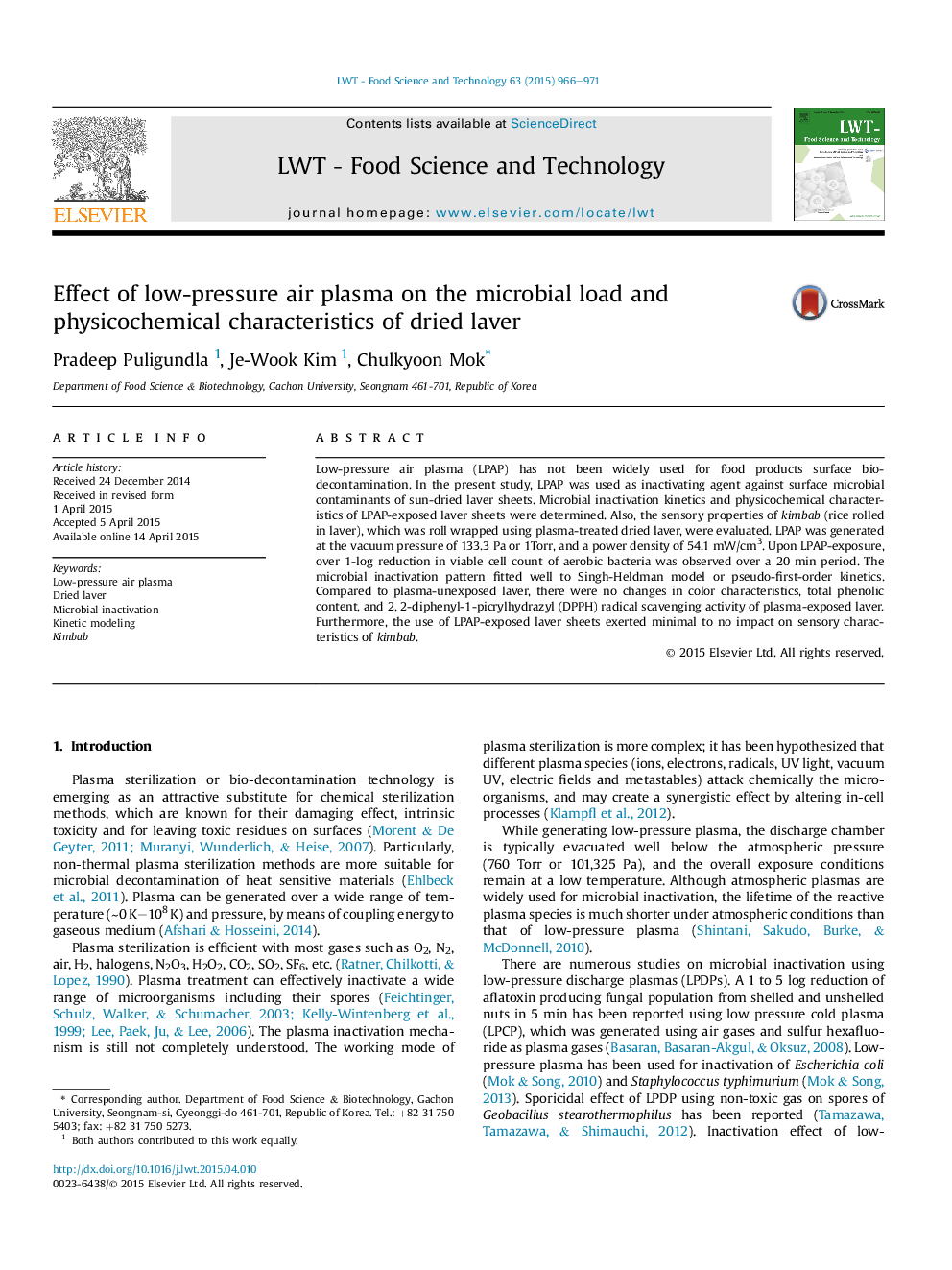| Article ID | Journal | Published Year | Pages | File Type |
|---|---|---|---|---|
| 6400429 | LWT - Food Science and Technology | 2015 | 6 Pages |
â¢Microbial contaminants such as aerobic bacteria, molds, and marine agar bacteria were detected in dried seaweed laver.â¢Greater than 1-log reduction in viability of contaminants was observed in 20 min of low-pressure air plasma (LPAP) exposure.â¢Inactivation patterns were better explained using pseudo-first-order kinetics than first-order kinetics.â¢Insignificant changes in color, phenolic content, 2, 2-diphenyl-1-picrylhydrazyl (DPPH) activity of laver on plasma treatment.â¢LPAP-exposed laver sheets exerted no negative impact on sensory characteristics of kimbab.
Low-pressure air plasma (LPAP) has not been widely used for food products surface bio-decontamination. In the present study, LPAP was used as inactivating agent against surface microbial contaminants of sun-dried laver sheets. Microbial inactivation kinetics and physicochemical characteristics of LPAP-exposed laver sheets were determined. Also, the sensory properties of kimbab (rice rolled in laver), which was roll wrapped using plasma-treated dried laver, were evaluated. LPAP was generated at the vacuum pressure of 133.3Â Pa or 1Torr, and a power density of 54.1Â mW/cm3. Upon LPAP-exposure, over 1-log reduction in viable cell count of aerobic bacteria was observed over a 20Â min period. The microbial inactivation pattern fitted well to Singh-Heldman model or pseudo-first-order kinetics. Compared to plasma-unexposed laver, there were no changes in color characteristics, total phenolic content, and 2, 2-diphenyl-1-picrylhydrazyl (DPPH) radical scavenging activity of plasma-exposed laver. Furthermore, the use of LPAP-exposed laver sheets exerted minimal to no impact on sensory characteristics of kimbab.
